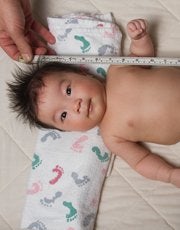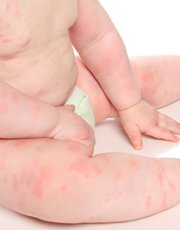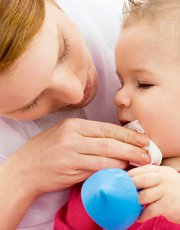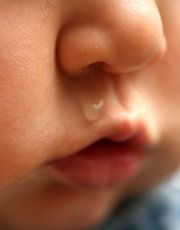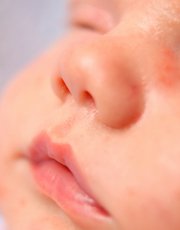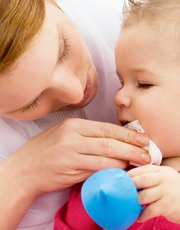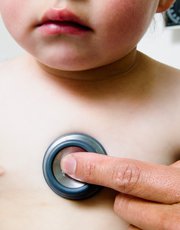
We believe breast milk is the best food for infants. When in consultation with their healthcare professional, mothers and families find that optimal breastfeeding is not possible due to their infant’s medical condition, formulas for special medical purposes play a vital role in providing essential nutrients to infants. We have a global commitment to market breast-milk substitutes responsibly.
This website is about the management of cows’ milk protein allergy and nutritional solutions intended for infants. By continuing on this website, you accept that Nestlé Health Science supplies the information at your own request.
Are you a healthcare professional (HCP) or a parent?
SYMPTOM: RASH
What is a baby rash?
Rashes are extremely common in babies. They can develop from as early as a few days after birth and are usually the result of a baby’s sensitive skin adapting to a new and very different environment. Most baby rashes are harmless and may usually go away on their own. In rare cases, a baby rash can indicate something more serious. Read on to find out everything you need to know about baby rashes.
Types of baby rash
There are many different types of baby rash that are caused by many different things. It’s important to find the root of the cause so that your baby can have the right treatment. Types of baby rash include:
- Cradle cap - a common skin condition caused by excessive production of sebum, characterised by areas of yellowish or brownish scales on the top of the head
- Nappy rash - caused by your baby's sensitive skin becoming irritated from their nappy
- Drool rash - appears around the mouth and cheeks, in the folds of your baby's neck, and on your baby's chest as a result of too much saliva causing wet skin
- Eczema - a highly itchy, common inflammatory skin condition characterised by red or brownish, dry, cracked and scaly skin
- Heat rash – this is caused by your baby becoming too hot and irritated in warmer conditions
- Hives – has many causes and is characterised by well-formed itchy welts and swelling of the skin surface
- Measles, chickenpox, scarlet fever or roseola - these are caused by viral and bacterial infections
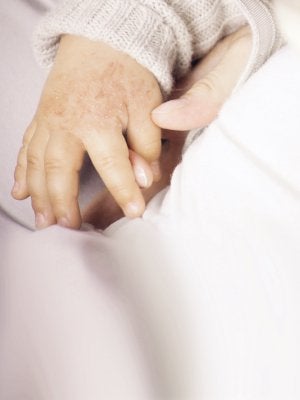
Baby rash causes
Food allergens, such as a Cows' Milk Allergy (CMA) may cause a rash. Other common causes of rashes include bacterial, fungal or viral infections. As babies are still developing immune systems, rashes are common, but usually harmless. Other causes of rashes in babies include:
- Allergies
- Dampness
- Friction
- Heat
- Reaction to chemicals or fragrances
Could it be Cows' Milk Allergy?
A rash is a common symptom for babies with CMA. Babies with CMA usually experience more than just one symptom and these symptoms can be very different from one another.
If you think that your baby has a rash, it may be CMA. You may have even noticed other symptoms (besides rash), which may affect other parts of your baby’s body.
For a simple and easy way to understand the symptoms associated with CMA, you can use our symptom checklist or symptom diary to track symptoms
This will allow you to select all the symptoms that your baby may have that may be cows’ milk-related. You can then discuss these with your doctor.
Treating & preventing baby rash
Baby rashes usually clear up themselves. However, there are a few things you can do to prevent rashes and to alleviate symptoms:
- Avoid fragranced lotions and soaps
- When bathing your baby, gently pat them instead of scrubbing
- Avoid use of soap on the face and use clean, warm water instead
- Put a bib on your baby
- Limit the use of a dummy
- Keep your baby cool
When to see a doctor about baby rashes
Usually, rashes in babies do not require medical attention. However, if a rash is accompanied by one of the below symptoms, you need to go to A&E or call 999, as they are symptoms of meningitis:
- Stiff neck
- Sensitive to light
- Confusion
- Shaking uncontrollably
- Fever
- Unusually cold hands and feet
- A rash that doesn't fade when you press a glass against it
In any case, if you have any doubts or concerns about your baby’s health, you should always seek advice from a medical professional as soon as possible. The information on this website should not replace medical advice from a medical professional.







